|
Journeys cannot have been very
comfortable, given that the wheels had solid tyres and the road surfaces
were bumpy. Indeed the buses soon became known locally as Foggie Dirders
(boneshakers).
The
service offered two buses a day (three on Saturdays), connecting with
trains at Huntly.
However, in the years before
World War One McMillan still ran horse-drawn passenger services to Turriff
and Cornhill, while the Banff-Aberchirder route had a mail coach operated
by Andrew Kindness of Banff and a carter service run by Joseph Morrison.
Right:
Timetable. Newspaper notices
for horse drawn goods, mail and passenger services between Banff and
Aberchirder, 1905. |
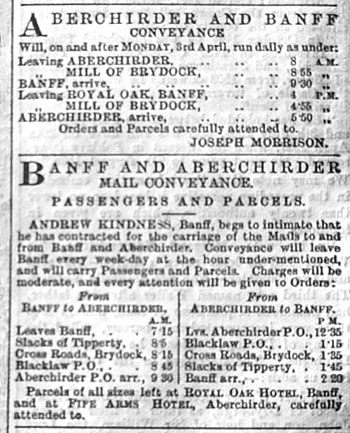
|
|
Steam traction engines were quite
common, as motor lorries were still at
an early stage of development.
Those which were used to drive threshing
mills, could also be seen on the roads travelling from farm to farm and
pulling heavy loads such as grain and stones. The Town Council
minutes of the time have frequent references to the damage these heavy
vehicles did to the streets and lanes.
What
is now McLaren's Garage was the base for
William McKay's steam
engine. |
|
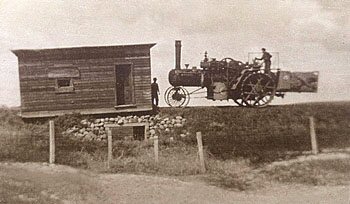
Steam traction engine at work.
(Picture
courtesy of Bruce Kean)
|
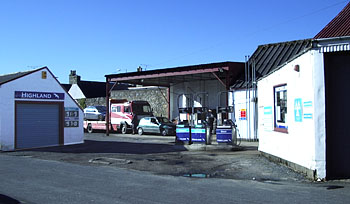
McLaren’s Garage in School
Lane 2006. |
|
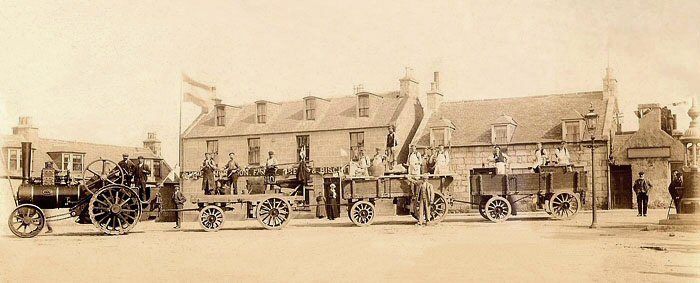
(Picture
courtesy of Hilda Esslemont) |
|
A photo taken at Queen
Victoria’s Diamond Jubilee celebrations on 22 June 1897 by Newton of
Cullen. One of the events was a procession and here a steam traction engine is
pulling carts containing tradesmen and their equipment across the Square
with Morrison the Baker’s shop in the background. The Jubilee
Fountain, donated by Provost Auchinachie and inaugurated during the
afternoon by his daughter, is on the right of the picture.
|
|
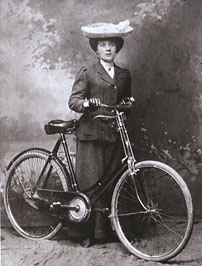
Cycling was also a popular means of transport at this time and
Aberchirder, like most towns, had a thriving Cycling Club.
The
lady in the picture is Agnes Urquhart Webster, whose daughter was Annie
Cockburn, mother of James Hay.
(Picture
courtesy of Janet Cockburn)
|
As transport developed,
blacksmiths were never short of business and could turn their hands to
repairing new as well as old vehicles.
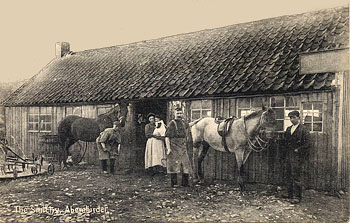
A group at Stevenson’s
Smiddy beside the Back Spoot well in School Lane, around 1907: Jimmy Milne
(shoeing the horse), unidentified lady (presumably Mrs Stevenson) and
child, Bob Stevenson and Dod Hosie.
(Picture
courtesy of Evelyn Chalmers)
|
 |
|
THE RISE OF BUS TRANSPORT
The
Great North of Scotland Railway (GNSR)
– including its road services - was taken over by the London & North East
Railway (LNER) in 1923. In 1930, LNER sold off its bus services to
Alexander’s Bluebird, which took over the garage in Aberchirder.
Bluebird continued the new services to Banff via Alvah and Cornhill which
LNER had introduced in 1928 and 1929. |
|
Meanwhile, local bus
operators began to flourish. The main player in Aberchirder was Alexander
Hay (always known as ‘Bussie Hay’), who in May 1926, bought the then
Foggie bus service – consisting of a covered-in lorry with seats - from a
Mr Chalmers for £25. Hay was a horseman on a farm in the King Edward
area and saw the rapidly increasing use of mechanisation and the
subsequent loss of jobs. He had a job fixed up in Canada and was
possibly going to emigrate when the opportunity to buy the bus business
arose. By August 1926 he had his first proper bus, a 14-seater
Chevrolet.
|
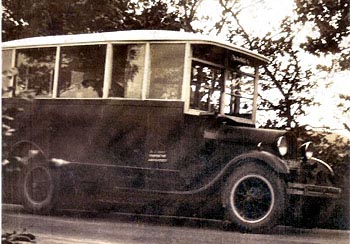
Hay's first bus 1926.
The chassis was driven up from Glasgow.
The body was built in Whitehills.
(Picture
courtesy of David Hay)
|
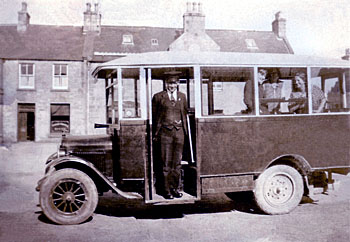
Alex Hay with three young ladies on
his first bus.
On the left is Catherine Davidson - later to marry Alex.
(Picture
courtesy of David Hay)
|
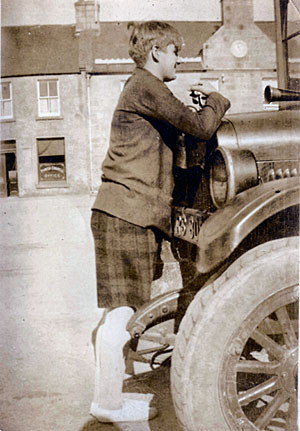
|
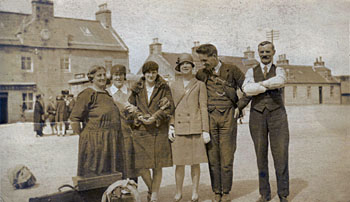
A group photograph - date
unknown.
2nd right is Alex Hay and 3rd left Catherine Davidson.
(Picture
courtesy of David Hay)
Pictured
left is Catherine
Davidson who taught at the Episcopal School in Aberchirder from 1928 until
she married Alexander Hay in 1943. She is standing in front of Hay's
first bus.
(Picture
courtesy of David Hay) |
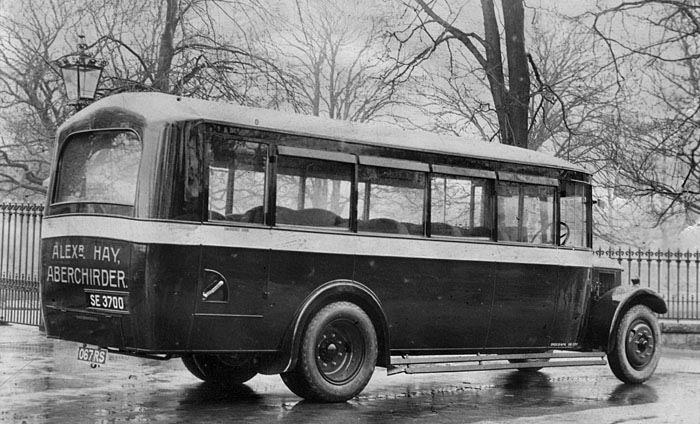
An Albion after a new paint
job.
(Picture
courtesy of David Hay) |
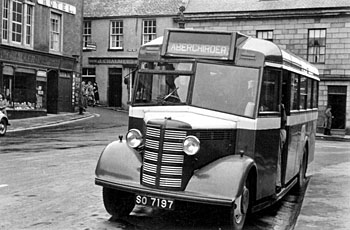
A Bedford bus with a
wartime utility body pictured in Banff.
Possibly early 1940s.
(Picture
courtesy of David Hay) |
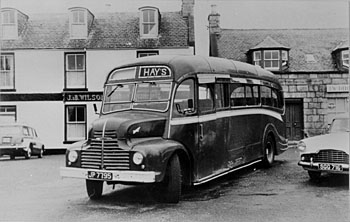
After 1948, Alex Hay
purchased second hand buses and
this
Leyland was one of them.
(Picture
courtesy of David Hay) |
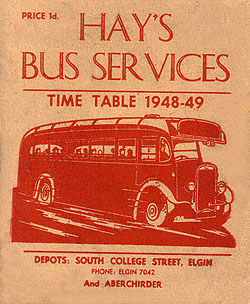
Click
image for detailed extracts and adverts
|
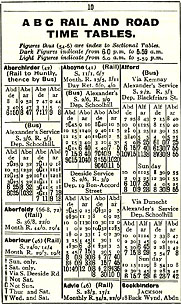
Click image for detailed Rail & Road Timetables
|
|

|
|
THE ARRIVAL OF
THE MOTOR CAR
After World War One the
private motor car began to become more popular, but only among relatively
wealthy people. MacLennan’s garage in Main Street and McKay’s garage in
School Lane were in operation, but from 1921 onwards, petrol pumps also appeared along
pavements outside shops and hotels. Many of these remained well into the
1960s. |
|
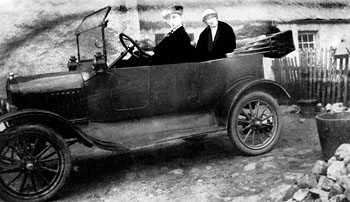
A couple – presumably Dod and Belle Hosie – in their car at
the rear of 88 Main Street.
(Picture Courtesy of Hector Hosie)
|
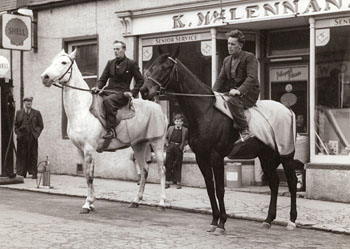
Kenny
MacLennan’s shop at 56-58 Main Street, with Shell petrol pump. The two
horses are (left) Silver Chimes with Hughie Greig and Kenny MacLennan’s
Nuffield, with Sandy Robb.
Dod Shand Snr
is standing at the pump and his son Charlie is between the horses.
(Picture Courtesy of Lily MacLennan)
|
|
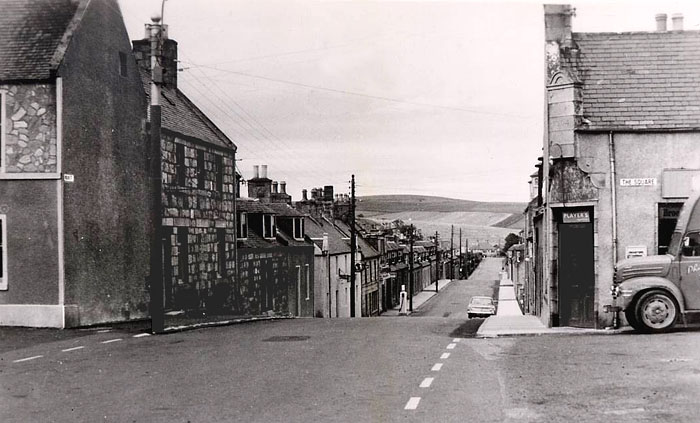
View down Main
Street from the Square around 1960, with a petrol pump outside what was
then the
Anderson of Mossat grocer’s shop.
(Picture Courtesy of Bob Peden)
|
|
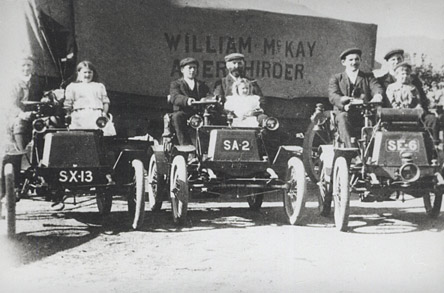 |
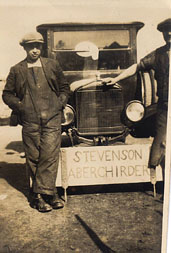 |
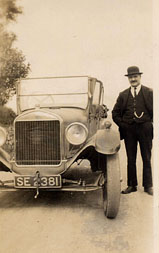 |
|
Three of the earliest motor
cars (two-seaters) in Aberchirder. SE6 was the first, and the small boy in
it is Donald McKay, presumably the son of engineer William McKay who ran
his business at 127 Main Street. All three cars show examples of the
earliest registration numbers (which began to be issued in 1903) – SE for
Banffshire, SA for Aberdeenshire and SX for West Lothian.
(Picture Courtesy of Phyllis Wright)
|
R D Stevenson and his son
Waldie with their first Ford lorry in the 1920s.
(Picture Courtesy of Sandy Stevenson) |
R D Stevenson, the
blacksmith, with his Ford car at Yonder Bognie in the 1920s.
(Picture Courtesy of Sandy Stevenson) |
![]()






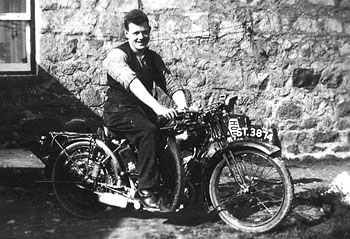
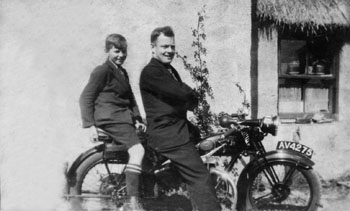
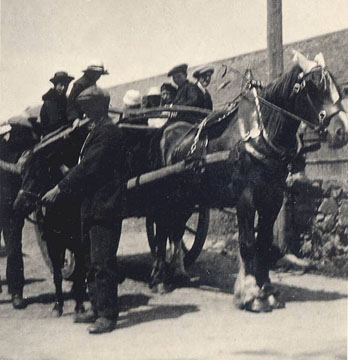
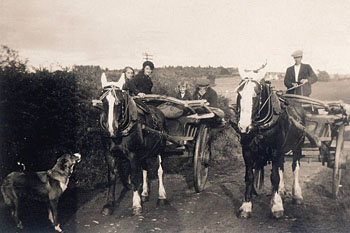
![]()